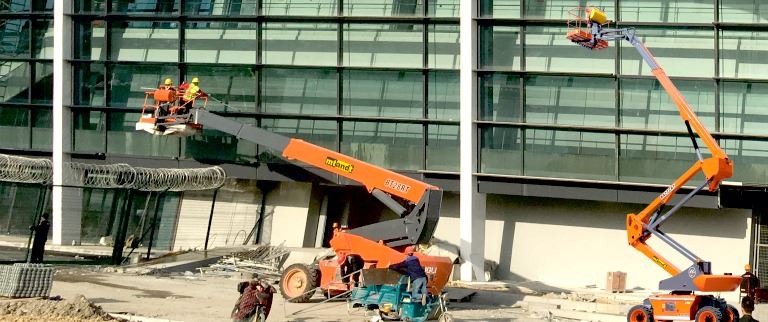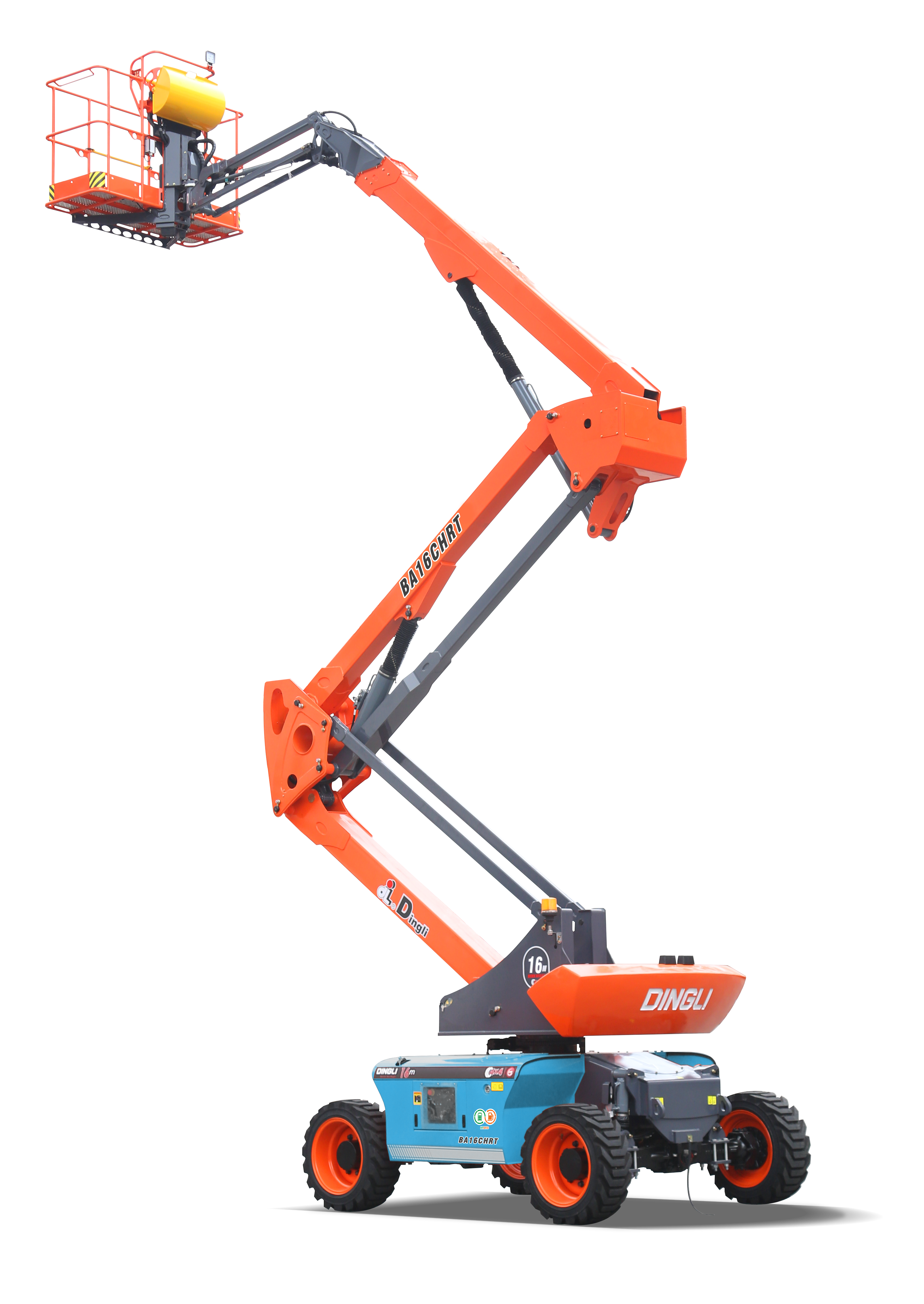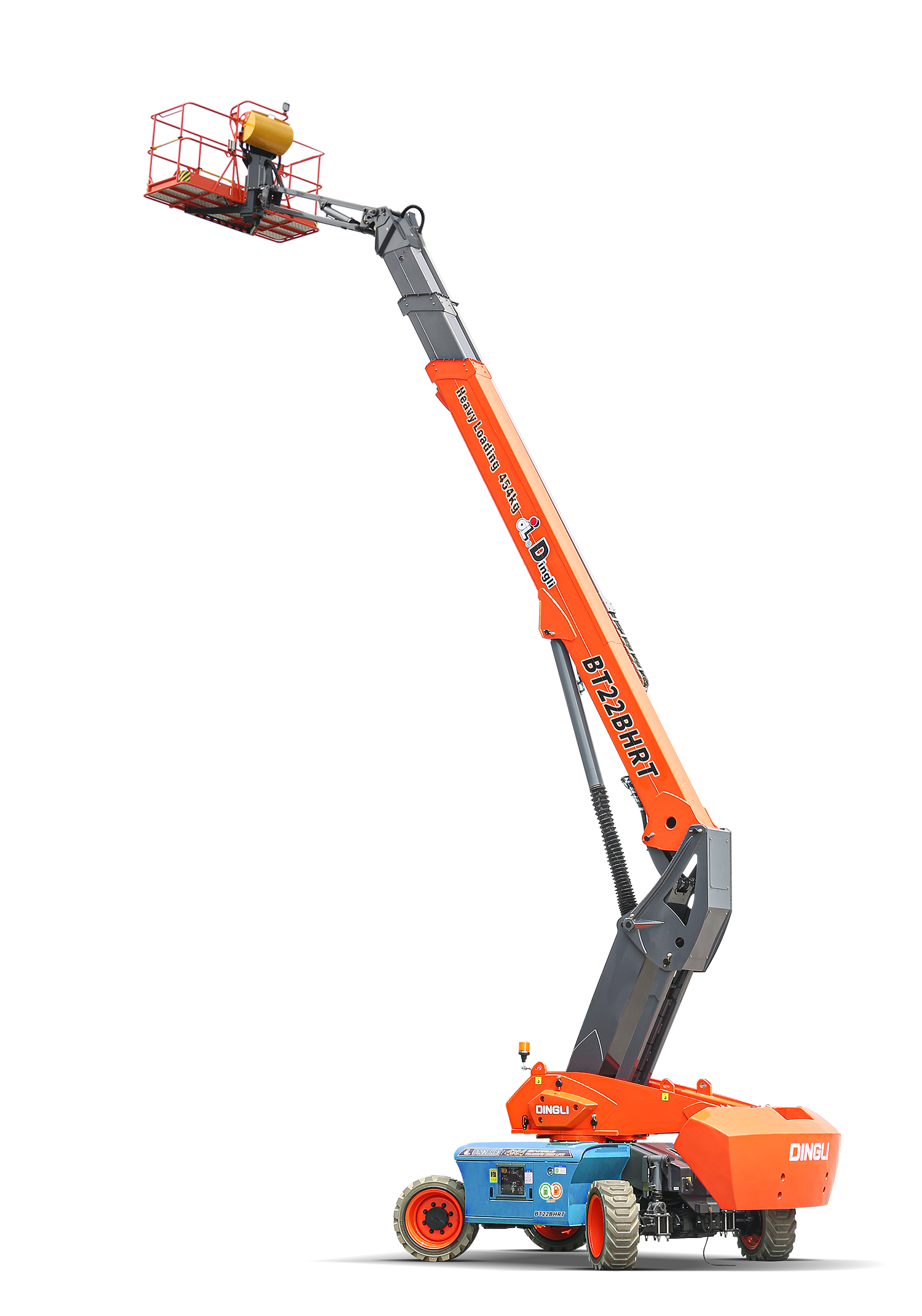October 14,2025
Upgrade Your Efficiency and Safety with Boom Lifts

Introduction:
Access to elevated work areas is crucial in the ever-evolving landscape of construction and maintenance projects. This is where boom lifts come into play, offering a versatile solution to reach heights and navigate challenging spaces with ease and security. Whether you are in the market to buy or looking for a temporary solution through rentals, understanding the ins and outs of boom lifts is essential. In this comprehensive guide, we'll explore what boom lifter are, their weight capacity, height reach, power sources, and the various types available from reputable boom lift manufacturers.
 What is a Boom Lift?
What is a Boom Lift?
A boom lift machine, or aerial boom lift, is a lifting platform mounted on a hydraulic arm. This versatile equipment is designed to elevate workers, tools, and materials to various heights safely and efficiently. The boom lift's articulated or telescopic arm allows for precise positioning, making it an invaluable asset in construction, maintenance, and other industries.
What is the Weight Capacity of a Boom Lift?
One of the crucial factors to consider when choosing a boom lift is its weight capacity. Different models come with varying load-bearing capacities, ensuring you can safely transport the necessary tools and materials to your desired work height. Before selecting a boom lift for sale or rent, assess your project requirements to match them with the appropriate weight capacity of the machine.
How High Can a Boom Lift Reach?
Boom lifts are renowned for reaching impressive heights, providing access to elevated work areas that would otherwise be challenging. Heights can vary based on the specific model and design. Typically, boom lifts can reach heights from 11m to 44m. Consider the maximum working height required for your projects when browsing for a boom lift for sale or rent.
How are Boom Lifts Powered?
Various sources can power Boom lifts, providing flexibility for different project environments. The two primary power sources for boom lifts are:
• Electric Boom Lifts: Ideal for indoor use, electric boom lifts produce zero emissions and operate quietly. They are well-suited for projects where environmental impact and noise levels are significant considerations.
• Diesel or Gas-Powered Boom Lifts: These lifts are designed for outdoor use and provide a robust solution for projects in open spaces. With powerful engines, they offer the strength to tackle demanding tasks in construction sites, industrial settings, or outdoor maintenance projects.
What are the different types of Boom Lift?
Boom lifts are different types, each designed to meet specific project requirements. Here are the main types available from reputable boom lift manufacturers:
• Articulating Boom Lifts: These lifts have jointed arms that allow precise maneuvering around obstacles. Articulating boom lifts are excellent for tasks that require reaching over and around structures.
• Telescopic Boom Lifts: Known for their straight, extendable arms, telescopic boom lifts offer impressive reach at a high height. They are well-suited for projects requiring a straightforward vertical extension without complex maneuvering.
• Truck-Mounted Boom Lifts: Mounted on a truck and are easily transportable without compromising safety and efficiency. They are a convenient choice for projects that involve frequent relocations.
Conclusion:
Whether you are in the market for a boom lift for sale or considering the flexibility of rentals, understanding the specifications, types, and capabilities of boom lifts is crucial. Reputable boom lift manufacturers offer a range of options to cater to diverse project needs. Evaluate your project requirements, consider the height reach, weight capacity, and power source, and choose the boom lift to elevate your projects.
Frequently Asked Questions (FAQ):
- What are the top 10 things you should know about boom lifts?
- Which boom lift type is best for different jobs?
- What’s the difference between articulated vs telescopic boom lifts?
- Should I rent or buy a boom lift?
- What are the safety features of Mtandt’s lifts?